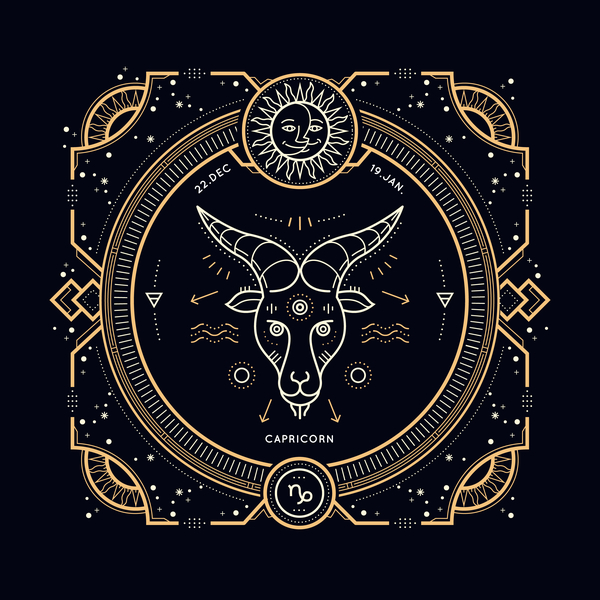
Have you ever gone stargazing? As human beings, we often look for recognizable patterns in the world around us. That’s how our distant ancestors connected the stars like dots, naming each constellation to represent characters from their cultural stories. As the tenth sign in the zodiac, Capricorn offers a brief study in ancient mythology, astronomical observation, and perhaps the human psyche.
A Small but Mighty Constellation
Capricornus is one of the faintest constellations in our night skies, according to Kim Ann Zimmerman of Space.com. Capricorn, the corresponding zodiac sign, is also one of the smallest in the zodiac wheel. Located 23.5 degrees south of the equator, the Tropic of Capricorn once marked where the Sun appeared overhead at the winter solstice. Although the actual solstice point is now closer to Sagittarius, the Tropic of Cancer still passes through South America, Australia, and southern Africa.
Capricornus includes three significantly visible stars: Alpha-2 Capricorni, Beta Capricorni, and Omega Capricorni. Constellations are “designed” by humans, so the stars inside them are in different stellar systems separated by tens or even hundreds of light-years. Alpha-2, Beta, and Omega Capricorni are located 103, 328, and 1,000 light-years away from our solar system respectively. Delta Capricorni, the constellation’s brightest star, forms its tail and is located about 39 light-years from Earth.
Capricorn in the Ancient World
Capricornus was one of the 48 constellations mentioned by Claudius Ptolemy, a Greek astronomer who wrote a four-volume collection on astrology during the second century CE. The Encyclopedia Britannica explains that its name comes from stories about Pan, a Greek fertility god with horns, a lower body, and legs like a goat. One version of the tale depicts Pan jumping into the sea as he fled Typhon, a multi-headed serpentine monster. Pan changed form when he hit the water. The top half of his body remained like a goat, but the bottom half formed a fishy tail.
Before Ptolemy wrote about Capricorn, the Sumerians and Babylonians called it Suhurmash, which translates to “goatfish.” This may refer to the sea goat, a creature mentioned in Greek tales, Jewish folklore, and Sumerian myths. The best known of these legendary creatures is Pricus, who was the very first sea goat who was created by the Titan Chronos. Like his father, Pricus could control time.
Hard-Working, Loyal, and Sometimes Stoic
AstroStyle describes Capricorn energy as “willful and determined.” That’s no surprise, considering the common expression, “stubborn as a goat.” When it comes to staying the course with projects, groups of friends, and their families, you could call Capricorns the “GOATs” of the zodiac. Their native earth element gives them a solid and honest quality, according to astrologers, while their ruling planet Saturn lends discipline and maturity as key traits. At their best, Capricorns are devoted and dependable people. Negative Capricorn energy may manifest as coldness, pessimism, or an unforgiving nature.
Capricorn is also a cardinal sign, which means that it falls at the beginning of a season. The Sun’s transit into this sign kicks off winter in the Northern Hemisphere and summer in the Southern Hemisphere. For astrology buffs, Capricorn energy can translate into a carefully crafted plan that starts a project or an event. If you’re born under the sign of the goat, you’re in good company. Fellow Capricorns include former R.E.M. front man Michael Stipe, civil rights activist Dr. Martin Luther King Jr., climate activist Greta Thunberg, and former First Lady Michelle Obama.
Determined, Stubborn, or Both?
Just as humans look for patterns, we also seek meaning in the world around us. There’s no scientific evidence that sea goats existed, of course, but the human imagination is flexible and fertile. With traits like its animal kingdom counterpart, Capricorn represents single-mindedness and resolve with both positive and negative outcomes.

